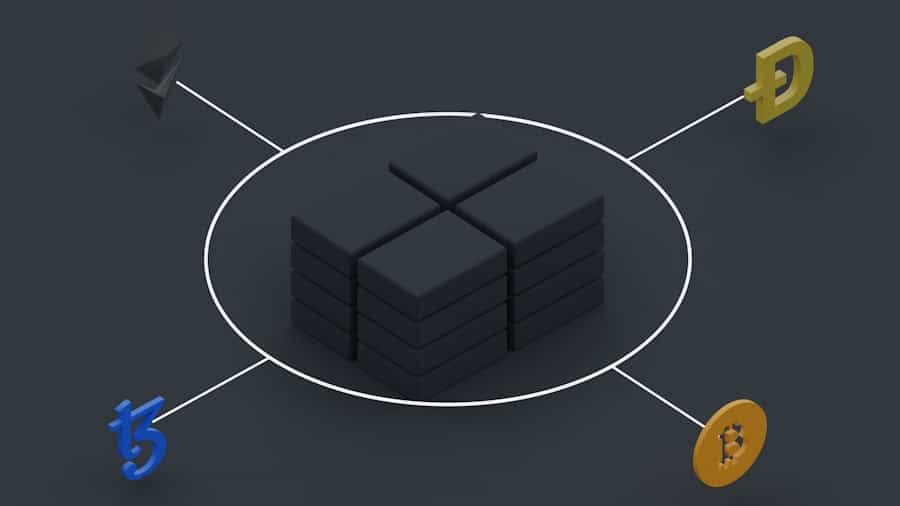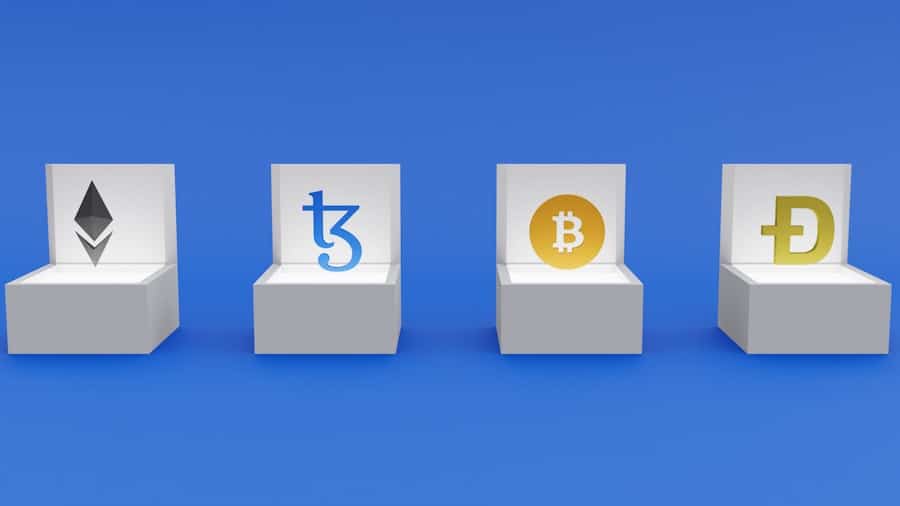Blockchain technology has emerged as a revolutionary force in the digital landscape, fundamentally altering how data is stored, shared, and secured. At its core, a blockchain is a decentralized ledger that records transactions across multiple computers in such a way that the registered transactions cannot be altered retroactively without the consensus of the network. This decentralized nature ensures that no single entity has control over the entire chain, which enhances security and transparency.
Originally developed as the underlying technology for cryptocurrencies like Bitcoin, blockchain has found applications across various sectors, including finance, supply chain management, healthcare, and identity verification. The appeal of blockchain lies in its ability to provide a secure and immutable record of transactions. Each block in the chain contains a cryptographic hash of the previous block, a timestamp, and transaction data, creating a chronological chain that is resistant to tampering.
This structure not only enhances security but also fosters trust among participants in a network. As organizations increasingly recognize the potential of blockchain to address longstanding issues related to data integrity and security, its adoption is gaining momentum. The implications for identity protection are particularly significant, as identity theft and data breaches continue to plague individuals and organizations alike.
Key Takeaways
- Blockchain technology is a decentralized and secure way of recording transactions and data.
- Current challenges in preventing identity theft and data breaches include centralized storage of sensitive information and vulnerabilities in traditional security measures.
- Blockchain technology can address identity theft and data breaches by providing a secure and immutable ledger for storing and verifying personal information.
- Case studies have shown successful implementation of blockchain in preventing identity theft and data breaches, such as in healthcare and financial services.
- Potential future developments in blockchain technology for identity protection include improved privacy features and integration with biometric authentication.
Current Challenges in Preventing Identity Theft and Data Breaches
The Alarming Rate of Data Breaches
According to the Identity Theft Resource Center, there were over 1,100 reported data breaches in the United States alone in 2020, exposing more than 300 million records. This staggering number highlights the severity of the issue and the need for more effective measures to combat identity theft.
The Limitations of Traditional Authentication Methods
One of the primary challenges in combating identity theft is the reliance on traditional authentication methods, such as passwords and security questions. These methods are often inadequate due to their susceptibility to phishing attacks, social engineering, and brute-force attacks. Furthermore, many individuals reuse passwords across multiple accounts, further compounding the risk of unauthorized access.
The Complexity of Regulatory Compliance
The increasing sophistication of cyberattacks means that even organizations with robust security measures can fall victim to breaches. Furthermore, regulatory compliance requirements add another layer of complexity, as organizations must navigate a patchwork of laws and regulations governing data protection. This complexity can make it difficult for organizations to stay ahead of cybercriminals and protect sensitive data.
How Blockchain Technology Can Address Identity Theft and Data Breaches
Blockchain technology offers a promising solution to the challenges posed by identity theft and data breaches through its inherent characteristics of decentralization, transparency, and immutability. By leveraging blockchain for identity management, organizations can create a secure digital identity framework that empowers individuals to control their personal information. Instead of relying on centralized databases that are vulnerable to attacks, blockchain allows users to store their identity credentials on a distributed ledger, significantly reducing the risk of unauthorized access.
One of the key advantages of using blockchain for identity protection is the ability to implement self-sovereign identity (SSI) systems. In an SSI model, individuals have full control over their personal data and can selectively share it with trusted parties without exposing their entire identity. For instance, instead of providing a driver’s license or social security number for age verification, a user could share a cryptographic proof of their age stored on the blockchain.
Case Studies of Successful Implementation of Blockchain in Preventing Identity Theft and Data Breaches
Several organizations have successfully implemented blockchain technology to enhance identity protection and mitigate the risks associated with data breaches. One notable example is Estonia’s e-Residency program, which allows individuals from around the world to establish a digital identity within Estonia’s secure blockchain infrastructure. This initiative enables e-residents to access various services, such as banking and business registration, while maintaining control over their personal information.
The use of blockchain ensures that all transactions are secure and verifiable, significantly reducing the risk of identity theft. Another compelling case study is IBM’s collaboration with various governments and organizations to develop blockchain-based identity solutions. One such initiative is the “ID2020” project, which aims to provide digital identities to individuals who lack formal identification.
By utilizing blockchain technology, ID2020 creates a secure and portable digital identity that can be accessed by users anywhere in the world. This approach not only empowers individuals but also enhances security by reducing reliance on traditional identification methods that are often prone to fraud.
Potential Future Developments and Innovations in Blockchain Technology for Identity Protection
As blockchain technology continues to evolve, several potential developments could further enhance its role in identity protection. One area of innovation is the integration of biometric authentication with blockchain systems. By combining biometric data—such as fingerprints or facial recognition—with blockchain’s secure storage capabilities, organizations could create highly secure identity verification processes that are resistant to forgery and impersonation.
Additionally, advancements in smart contracts could facilitate automated identity verification processes while ensuring compliance with regulatory requirements. Smart contracts are self-executing contracts with the terms of the agreement directly written into code on the blockchain. By automating identity verification through smart contracts, organizations can streamline processes while maintaining high levels of security and transparency.
This could lead to more efficient onboarding processes for businesses while simultaneously reducing the risk of identity fraud.
Regulatory and Legal Implications of Using Blockchain for Identity Protection
Data Ownership and Privacy Rights in a Decentralized Environment
One significant challenge is the need for clarity regarding data ownership and privacy rights in a decentralized environment. Traditional data protection regulations, such as the General Data Protection Regulation (GDPR) in Europe, impose strict requirements on how personal data is collected, stored, and processed.
Compliance with Existing Regulations
The immutable nature of blockchain poses questions about how organizations can comply with these regulations while still leveraging its benefits. Moreover, there is a need for regulatory frameworks that specifically address blockchain technology’s unique characteristics.
Developing Guidelines for Innovation and Safeguarding Rights
Policymakers must consider how existing laws apply to decentralized systems and whether new regulations are necessary to govern their use effectively. Collaboration between industry stakeholders and regulators will be crucial in developing guidelines that promote innovation while safeguarding individuals’ rights.
The Role of Blockchain in Securing Personal and Sensitive Data
Blockchain technology plays a pivotal role in securing personal and sensitive data by providing a robust framework for data integrity and access control. The decentralized nature of blockchain means that data is not stored in a single location but rather distributed across multiple nodes in the network. This distribution makes it significantly more challenging for cybercriminals to compromise large volumes of data at once.
Furthermore, blockchain employs advanced cryptographic techniques to secure data transactions. Each transaction is encrypted and linked to previous transactions through cryptographic hashes, creating an unalterable chain of records. This ensures that any attempt to modify or delete data would require altering all subsequent blocks in the chain—a virtually impossible task without consensus from the network participants.
As a result, organizations can confidently store sensitive information on blockchain platforms without fear of unauthorized alterations or breaches.
The Future Impact of Blockchain on Preventing Identity Theft and Data Breaches
The potential impact of blockchain technology on preventing identity theft and data breaches is profound and far-reaching. As organizations increasingly adopt decentralized solutions for identity management, individuals will gain greater control over their personal information while benefiting from enhanced security measures. The shift towards self-sovereign identities represents a paradigm change in how we think about personal data ownership and privacy.
Moreover, as innovations continue to emerge within the blockchain space—such as biometric integration and smart contracts—the landscape for identity protection will evolve further. However, addressing regulatory challenges will be essential to ensure that these technologies can be implemented effectively while safeguarding individual rights. As we move forward into an increasingly digital future, blockchain stands poised to play a critical role in reshaping how we protect our identities against theft and breaches, ultimately fostering a more secure online environment for all users.
In a recent article discussing the future of blockchain in preventing identity theft and data breaches, it is important to consider the evolving landscape of technology and its impact on cybersecurity. As highlighted in a related article on com/best-software-for-literature-review/’>the best software for literature review, staying informed about the latest trends and tools is crucial in safeguarding sensitive information.
By utilizing blockchain technology, organizations can enhance their security measures and protect against potential threats. This proactive approach is essential in today’s digital age where data breaches are becoming increasingly common.
FAQs
What is blockchain technology?
Blockchain technology is a decentralized, distributed ledger that records transactions across many computers in such a way that the registered transactions cannot be altered retroactively.
How can blockchain prevent identity theft?
Blockchain can prevent identity theft by providing a secure and tamper-proof way to store and verify identity information. This can be achieved through the use of cryptographic techniques and decentralized storage, making it difficult for hackers to access and manipulate personal data.
How does blockchain help in preventing data breaches?
Blockchain helps prevent data breaches by providing a secure and transparent way to store and transfer data. The decentralized nature of blockchain makes it difficult for hackers to access and manipulate data, and the use of cryptographic techniques ensures that data remains secure.
What are the potential future applications of blockchain in preventing identity theft and data breaches?
In the future, blockchain technology could be used for secure identity verification, data storage, and access control. It could also be used to create secure and tamper-proof audit trails for sensitive data, making it easier to track and prevent unauthorized access.
What are the limitations of blockchain in preventing identity theft and data breaches?
While blockchain technology offers many benefits in preventing identity theft and data breaches, it is not immune to all security threats. For example, blockchain can still be vulnerable to attacks on the endpoints where data is entered or accessed, and it may also face challenges related to scalability and regulatory compliance.



